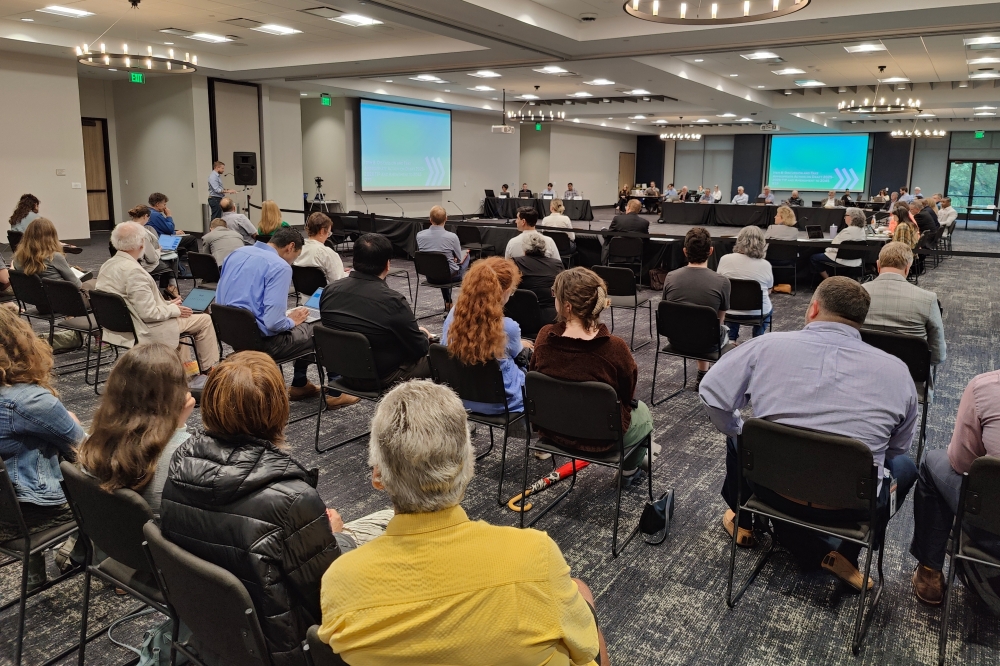A regional transportation planning body rejected Austin City Council members' attempt to stall funding for the Texas Department of Transportation's upcoming I-35 expansion project before it breaks ground.
The big picture
Four city officials sitting on the Transportation Policy Board of the Capital Area Metropolitan Planning Organization sought to hold off on the body's support for funding more than $4 billion in I-35 projects. Those items will now be advancing without interruption.
In a statement, the state highway department said it's now anticipating the I-35 project moving along soon.
"TxDOT looks forward to breaking ground this year on the I-35 Capital Express Central project to provide long overdue and much needed safety enhancements and mobility improvements for all users of this critical corridor," a spokesperson said.
The 22-seat CAMPO policy board includes four spots for Austin alongside representatives from mostly suburban Central Texas cities and counties. The request from the capital city came as CAMPO members considered short- and long-range planning for regional transportation initiatives, including Capital Express Central—TxDOT's widening of I-35 through 8 miles of the heart of Austin. The I-35 items will all be included
City Council members Natasha Harper-Madison, Vanessa Fuentes, Paige Ellis and Alison Alter asked their CAMPO colleagues to keep Capital Express items out of the body's latest regional funding plans until:
- Further analysis of air quality impacts stemming from the highway expansion can be examined
- TxDOT considers funding other local mobility projects, including Austin's cap and stitch strategy to bridge I-35
What happened
The CAMPO policy board broadly rejected the Austin delegation's proposal on May 13, with only the four council members and appointed Travis County representative Amy Pattillo voting in favor of that measure.
The resolution was shot down following some heated questioning and exchanges between board members, and after dozens of speakers asked to approve Austin's resolution. CAMPO will include the I-35 projects in its new plans.
Most of those testifying at the meeting opposed a widened I-35, citing concerns about negative health and environmental effects, limited congestion relief, displacement of residents and businesses, and safety issues.
“Air pollution is not going to stop at property lines, the county lines. Travis County air is Williamson air, is Bastrop air, is Hays air and so on. We’re all in this air quality game together, as well as the congestion game," said Robert Boler. "TxDOT graded their own homework on this, and I’m asking to you to vote for our kids, not to fund the I-35 expansion until proper air pollution impact studies are done at the bare minimum.”

“We offer this amendment today because we believe that we need to make fully informed decisions. That includes completing the air quality modeling and emission reduction studies that both the city of Austin and Travis County have requested," council member Alison Alter said. "We do so mindful that I-35 construction will last a long time, and that we need to get this right from the start.”
Other CAMPO board members said Austin's push shouldn't interrupt broader transportation work in the region, including TxDOT's many proposed upgrades to the aging I-35. Caldwell County Commissioner Edward Theriot said it'd be "fiscally irresponsible" to delay and potentially risk losing the project's federal funding.
“I understand the concerns. I know they are honest and real, but I believe that [TxDOT Austin District Engineer Tucker Ferguson] and his team have demonstrated that they hear you and have made many modifications to this project over the years to address those concerns as they come forward, and I believe they’ll continue to do that as these studies come forward," he said.
Cedar Park Mayor Jim Penniman-Morin said, while he wants officials to find ways to encourage transit use and reduce car trips, the revamped I-35 with new HOV lanes would be "the best bet" for now to get suburban residents out of their cars in Austin.
Travis County Commissioner Jeff Travillion said he didn't want to see CAMPO's debates turn into a "gunfight" like the May 13 vote and asked for more collaboration between entities affected by the highway plan.
What's next
After the failed May vote, Ferguson said the state highway department could still adjust its Capital Express approach based on new air quality information going forward.
“Whatever findings come out of the city’s program and the CAMPO study, we’ll certainly incorporate those findings with best practices and whatever the recommendations could be into this project if they fit to the scope of the project and are possible," he said.
TxDOT received extensive public review of Capital Express Central, collecting tens of thousands of comments across in-person and virtual engagement periods over recent years.
With that process wrapped up, alongside required federal environmental evaluations, TxDOT is readying to begin Capital Express Central construction this year. The state highway department still faces legal opposition over its handling of I-35's environmental reviews.
As the overall project moves forward, Austin is also collaborating with TxDOT to realize its vision of better connectivity along I-35 downtown with a series of new amenity decks over I-35. The city and The University of Texas may end up investing hundreds of millions of dollars to add raised caps and stitches with public features across the new-look highway.





